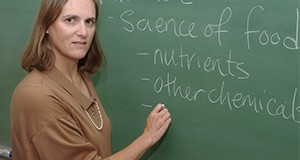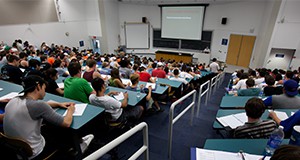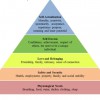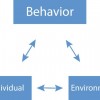This 5-page document discusses Understanding by Design, an approach to designing curriculum that allows instructors to focus on desired learning outcomes and provide structure for student learning. Written by Tyler L. D’Angelo, Andrew C. Thoron, and J. C. Bunch and published by the UF/IFAS Department of Agricultural Education and Communication, January 2019.
http://edis.ifas.ufl.edu/wc322
Tag: Andrew C. Thoron
Teaching Students with Disabilities
Seven new articles have been published in the Teaching Students with Disabilities series. This series provides useful information to ag-ed based instructors about different disabilities and how to teach those students in the unique environments posed by ag-ed, including classroom, laboratory, and non-formal environments. The new articles are as follows:
- WC258 Hearing Impairments and Deafness (http://edis.ifas.ufl.edu/wc258)
- WC259 Visual Impairment and Blindness (http://edis.ifas.ufl.edu/wc259)
- WC260 Emotional Disturbance and Behavioral Disorder (http://edis.ifas.ufl.edu/wc260)
- WC261 Intellectual Disabilities (http://edis.ifas.ufl.edu/wc261)
- WC262 Orthopedic Impairment (http://edis.ifas.ufl.edu/wc262)
- WC263 Speech and Language Impairments (http://edis.ifas.ufl.edu/wc263)
- WC264 Traumatic Brain Injury (http://edis.ifas.ufl.edu/wc264)
Written by Blake C. Colclasure, Andrew C. Thoron, and Sarah E. LaRose and published by the Department of Agricultural Education and Communication.
http://edis.ifas.ufl.edu/topic_series_teaching_students_with_disabilities
Principles and Practices to Secure and Hold Interest

Securing and holding student interest is a major challenge for teachers. Once the curriculum is set, then teachers must decide how to teach the content, particularly how to build lasting interest in the content being taught. Students learn more and retain what they have learned longer when they are interested in the content, see its usefulness, and are motivated to learn and apply what they have learned. This three-page fact sheet discusses what makes a topic or lecture interesting for students and ways to improve teaching methods to keep students engaged and interested in the subject matter. Written by R. Kirby Barrick and Andrew C. Thoron, and published by the Agricultural Education and Communication Department.
http://edis.ifas.ufl.edu/wc242
Principles of Teaching and Learning

Effective teaching involves careful consideration and planning. There are several different principles that can be used to guide teachers in planning their lessons. This two-page fact sheet provides information on how to organize and structure subject matter, motivate students, effectively use reward and reinforcement, and other techniques for instruction. Written by R. Kirby Barrick and Andrew C. Thoron, and published by the Agricultural Education and Communication Department.
http://edis.ifas.ufl.edu/wc243
Teaching Behavior and Student Achievement

Student achievement can clearly be enhanced through effective teaching behaviors, but what kinds of teacher behaviors lead to higher achievement among learners? This six-page fact sheet describes five different teacher behaviors that can lead to higher student achievement. These behaviors are clarity, variability, Enthusiasm, task oriented and/or businesslike behavior, and student opportunity to learn criterion material. Written by R. Kirby Barrick and Andrew C. Thoron, and published by the Agricultural Education and Communication Department.
http://edis.ifas.ufl.edu/wc244
Writing Instructional Objectives

Good teaching begins with well-written instructional objectives. Instructional objectives identify the knowledge, skills, and abilities that students will possess upon successfully learning the material. This four-page fact sheet outlines the three types of objectives (cognitive, psychomotor, and affective) as well as the different components of objectives (condition, performance, criterion). A well-written instructional objective will lead to clear teaching and ultimately, student success. Written by R. Kirby Barrick and Andrew C. Thoron, and published by the Agricultural Education and Communication Department.
http://edis.ifas.ufl.edu/wc245
Teaching Students with Disabilities: Autism Spectrum Disorder and Asperger's Syndrome

Teachers of all subjects must familiarize themselves with the specific needs of the students in their classrooms, especially in the case of students with autism spectrum disorders (ASD) and Asperger’s syndrome because students may vary greatly in the degree to which they are affected by these disabilities. This four-page fact sheet explains the differences between autism and Asperger’s syndrome and how instructors can modify their lessons to effectively meet the needs of learners with these disabilities in different types of learning environments and achieve greater classroom success for the educator and the learner. Written by Sara E. LaRose and Andrew C. Thoron, and published by the Agricultural Education and Communication Department.
http://edis.ifas.ufl.edu/wc240
Attribution Theory: How is it Used?
 Attribution theory is defined as the way that individuals envision the success or failure of their own behavior or the behavior of others. This 4-page fact sheet explains how instructors, whether formal or informal, can use this theory in their learning environment to enhance their learners’ knowledge and comprehension. Written by Eric D. Rubenstein and Andrew C. Thoron, and published by the UF Department of Agricultural Education and Communication, September 2014.
Attribution theory is defined as the way that individuals envision the success or failure of their own behavior or the behavior of others. This 4-page fact sheet explains how instructors, whether formal or informal, can use this theory in their learning environment to enhance their learners’ knowledge and comprehension. Written by Eric D. Rubenstein and Andrew C. Thoron, and published by the UF Department of Agricultural Education and Communication, September 2014.
http://edis.ifas.ufl.edu/wc162
Setting Goals to Promote Academic and Personal Achievement
 Learners begin to envision their futures in both academic and personal settings even as children. The future that we develop motivates us to engage in learning environments, work experiences, and social encounters/settings. As instructors, we have the opportunity to help learners develop academic and personal goals that will develop and shape their future. This 3-page fact sheet assists instructors in developing their knowledge of goal theory, thereby allowing them to assist learners in utilizing their personal and academic goals to develop goal-directed achievement behaviors. Written by Eric D. Rubenstein and Andrew C. Thoron, and published by the UF Department of Agricultural Education and Communication, 2014.
Learners begin to envision their futures in both academic and personal settings even as children. The future that we develop motivates us to engage in learning environments, work experiences, and social encounters/settings. As instructors, we have the opportunity to help learners develop academic and personal goals that will develop and shape their future. This 3-page fact sheet assists instructors in developing their knowledge of goal theory, thereby allowing them to assist learners in utilizing their personal and academic goals to develop goal-directed achievement behaviors. Written by Eric D. Rubenstein and Andrew C. Thoron, and published by the UF Department of Agricultural Education and Communication, 2014.
http://edis.ifas.ufl.edu/wc166
Planning for Effective Instruction
 Deciding what students need to know through the development of declarative objectives, deciding what students need to able to do through the development of procedural objectives, considering how to evaluate student learning, and planning meaningful learning experiences will allow for effective instructional planning. Following these basic steps will allow educators to determine the specific goals of the lesson, the course, or the program in order to effectively prepare students. This 4-page fact sheet was written by Sarah E. Burleson and Andrew C. Thoron, and published by the UF Department of Agricultural Education and Communication, April 2014.
Deciding what students need to know through the development of declarative objectives, deciding what students need to able to do through the development of procedural objectives, considering how to evaluate student learning, and planning meaningful learning experiences will allow for effective instructional planning. Following these basic steps will allow educators to determine the specific goals of the lesson, the course, or the program in order to effectively prepare students. This 4-page fact sheet was written by Sarah E. Burleson and Andrew C. Thoron, and published by the UF Department of Agricultural Education and Communication, April 2014.
http://edis.ifas.ufl.edu/wc160
Maslow's Hierarchy of Needs and Its Relation to Learning and Achievement
 Learners in courses or training can be preoccupied. They worry about other courses, their home life, friends, extracurricular activities, physiological needs like food and sleep, and the list goes on. When learners are preoccupied with these concerns, learning and achievement are regularly put on the back burner. So how do we get our learners to focus on learning? Instructors can help learners satisfy needs, so the focus can be on content, learning, and achievement. This 3-page fact sheet was written by Sarah E. Burleson and Andrew C. Thoron, and published by the UF Department of Agricultural Education and Communication, April 2014.
Learners in courses or training can be preoccupied. They worry about other courses, their home life, friends, extracurricular activities, physiological needs like food and sleep, and the list goes on. When learners are preoccupied with these concerns, learning and achievement are regularly put on the back burner. So how do we get our learners to focus on learning? Instructors can help learners satisfy needs, so the focus can be on content, learning, and achievement. This 3-page fact sheet was written by Sarah E. Burleson and Andrew C. Thoron, and published by the UF Department of Agricultural Education and Communication, April 2014.
http://edis.ifas.ufl.edu/wc159
Inclusion of Diverse Learners in the Educational System
 Every student in the United States has the right to an education. But not every student is ready, prepared, or willing to learn. Teachers trying to fully engage students in the learning environment can find it difficult when working with students from diverse backgrounds. Forms of diversity such as socioeconomic status, ethnicity/race, learning style, cognitive ability, gender, and ability to process and store knowledge can cause an “achievement gap” between students. This 4-page fact sheet highlights effective educational strategies for engaging students in the learning environment and assisting in closing achievement gaps. Written by Eric D. Rubenstein and Andrew C. Thoron, and published by the UF Department of Agricultural Education and Communication, July 2013.
Every student in the United States has the right to an education. But not every student is ready, prepared, or willing to learn. Teachers trying to fully engage students in the learning environment can find it difficult when working with students from diverse backgrounds. Forms of diversity such as socioeconomic status, ethnicity/race, learning style, cognitive ability, gender, and ability to process and store knowledge can cause an “achievement gap” between students. This 4-page fact sheet highlights effective educational strategies for engaging students in the learning environment and assisting in closing achievement gaps. Written by Eric D. Rubenstein and Andrew C. Thoron, and published by the UF Department of Agricultural Education and Communication, July 2013.
http://edis.ifas.ufl.edu/wc150
